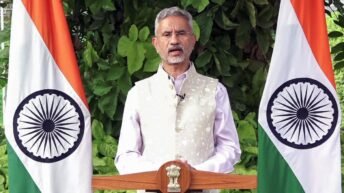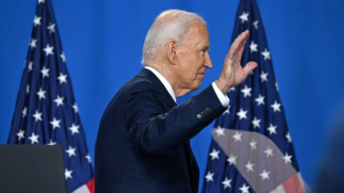|
Listen to article
Getting your Trinity Audio player ready...
|

On July 1, 2021 the Chinese Communist Party (CCP) celebrated its official centenary foundation Day, with expected celebrations and grandeur. Beginning from the few of handful comrades who got united in Shanghai (1921) to establish the CCP, the journey of the party and its success story from past to present has been carefully crafted and told in a manner to avoid some ‘inconvenient truths’ and disseminate party’s contribution to the making of what we call as ‘Modern China’.
To me the history of CCP, has to be broadly categorized into three phases, which can be identified as Revolution, Reform and now making for a Chinese Rejuvenation. With every period in history, CCP has to face its own set of challenges. Much of this is well preserved and visible at CCP Museum at Xintiandi, Shanghai, where the first national Party Congress happened in 1921, and which this author has visited as part of PhD fieldwork in 2017. In all these phases CCP has been able to show the adaptability in ranks and organizations, experimentation with ideas and growth models, and also come up with a vision for the future, what they call the realization of ‘China Dream’. However, unlike Revolution and Reform, the greater call for Chinese rejuvenation is something about which major powers of the world are more concerned and interested.
The success of the party’s continuing efforts in restoring the ‘greatness of Chinese civilisation’ and having succeeded to transform a ‘semi feudal and semi colonial’ state like China into a ‘moderately well off society’ was evident from huge proclamations made by the Chinese President Xi Jinping in his centenary address to the country. Placing Party above all and at the core of China’s success story, President Xi Jinping’s address underlined the key role of CCP, “to realise the national rejuvenation of China, with unyielding determination”. To point it out, CCP in China runs the government and commands the People’s Liberation Army (PLA) and also controls all key aspects of individual lives and civil society, in what we term a ‘party-state model’.
Two set of discourse have been dominant in the academic circles as we mark the centenary celebrations of the CCP. The official discourse put forward by state institutions and researchers, some sort of propaganda machinery, and some independent scholars with moderate views on China, is that the CCP is a unique case of ‘surviving through crises’ and has come out much resolute out of many challenges since its beginning. This is well documented in the noted and recent academic works like The Party and the People: The Chinese Politics in the 21st Century, Princeton Press (2021) and From Rebel to Ruler: One Hundred Years of the CCP, Harvard Press, (2021).
On the other hand there are some views from purely western perspective suggesting for the inevitability of rising forms of resistance and contemporary challenges within Chinese society, economy and politics leading to the collapse of China or at least causing a greater political reform in the party-state model as in China Coup: The Great leap to Freedom (California, 1921). The problem with this prognosis is that they fail to acknowledge the ‘ideological adaption’ and ‘structural transformation’ within the party state model of China, in a rather gradual manner to certain forms of ‘legal protectionism’ for its citizens. All this has been led and executed by the CCP and its leadership. This forms the core of China’s ‘authoritarian resilience’ and has been backed by series of legal reforms in post reform years.
Quite notably, subject to concerns on ‘social stability and political control’ the party-state model does allow for interactions between state and civil society and facilitates a mutual learning process. This is a kind of feedback mechanism, same as ‘seeking truth from facts’ and being responsive to the demands and changes within the socio-economic process of the country. A ringside view might not offer the same outlook but one has to look at it from a holistic perspective.
The first phase, which was one of revolution beginning from CCP’s foundation in 1929 to 1978, has seen much of this resistance and ideological dissension within the organisation and senior leadership, subject to a complex yet evolving party structure. From being solely dependent on Soviet Marxism to ‘Sinification of Marxism’ as propounded by Chairman Mao, China made a departure from ‘Orthodox Marxism’ with a stress on peasantry led socialist revolution and guerrilla warfare. This also characterised CCP’s ‘ideological reinvention’ with time and has been a constant factor in CCP’s journey in the last 100 years.
Beginning from the Civil War period (1927-1949) which involved fights between Chinese nationalist KMT forces and the CCP, to the Japanese invasion of China (1937-45), the Great Leap Forward (1958), the Cultural Revolution (1966) and the death of Chairman Mao bringing an end to the political faction of the gang of Four, the CCP in the ‘phase of revolution’ evinced adaptability and carried out a reorientation with regard to the ideas of Marxism and its suitability to the Chinese people. Despite its limited success, the party was able to consolidate on its ‘purposeful gains’ during the era of revolution, and has been striving hard to set the historical narratives of its early years on unification and liberation of China, delicately avoiding discussions and erasing public memories of embarrassing missteps.
The same tactic was practiced in the second phase which was the era of ‘Reform and Opening Up’ after 1978. Led by the visionary leadership of Deng Xiaoping this era shows the ‘resilience of the CCP’, aiming to transform China from a backward low-income country to a highly developed modern economy. Unlike the western approach to the rule of law leading to development and equity, Chinese opted for selective repurposing and adhered to ‘law and development model’ preferably in the economic domain, attracting business investments and economic players to a more open and growth centric, more predictable and receptive economic framework.
In the name of ‘socialism with Chinese characteristics’, the reform era brought huge success to the Chinese economy with rising per capita incomes, alleviation of poverty, urbanisation and world-class infrastructure, emergence of a new middle class, education and military reforms, turning the ‘sick man’ of Asia into a formidable economic power. Never in its history has China witnessed such prosperity.
With economic growth and successes came the sense of self-confidence and celebration, and again an ideological reinvention within the CCP to realise the Chinese Dream and a call for the “great rejuvenation of the Chinese nation”. This third phase began under the present leadership of President Xi Jinping in 2012, and is also witnessing its own set of challenges.
While the aim is to regain the ‘dominant position for China’ in the world, there are also rising concerns on the internal and external fronts for the CCP. The widening rural-urban gap, regional disparities and corruption, deteriorating environment, slowing economy and shifting trade patterns, ageing population and weak productivity, increasing political centralisation and end of the collective leadership principle, elites dissatisfaction and questions of succession within the CCP. The lack of rule by consensus, restrictions on economic freedom, crushing of dissent and ascendance of the surveillance state model is more likely to wipe out the gains of reform years.
Moreover, amidst the Corona pandemic and criticism from global media, China not only absolved itself unapologetically from controversial issues but rather has shown a more ‘aggressive posturing’ on regional issues like the simmering Hong Kong crisis, reunification with Taiwan and the border standoff with India. Recently, the Biden administration identified China as a strategic threat and there is a greater diplomatic effort and synergy to bolster a democratic alliance in the Indo-Pacific.
All these developments cannot be seen in isolation and they raise major problems for the CCP as a ruling organisation. In a competitive external environment, and with increasing political control that also stifles economic freedom domestically, the realisation of the China Dream is directly linked with how the CCP is able to stabilise the economy and apply policy pragmatism to draw benefits from global developments.
The task before the CCP is challenging and long-term. And as the old Chinese proverb states, “a journey of a thousand miles begins with single step”. It is to be seen if the party is able to adopt any kind of prudent self-correction with forbearance. The bigger question is, if CCP does not fall down in ‘success trap’, then another success story of realising the Chinese dream would be an ‘indelible achievement’ for the party, bestowing on it ‘mandate of heaven’ (tianming).






Add comment